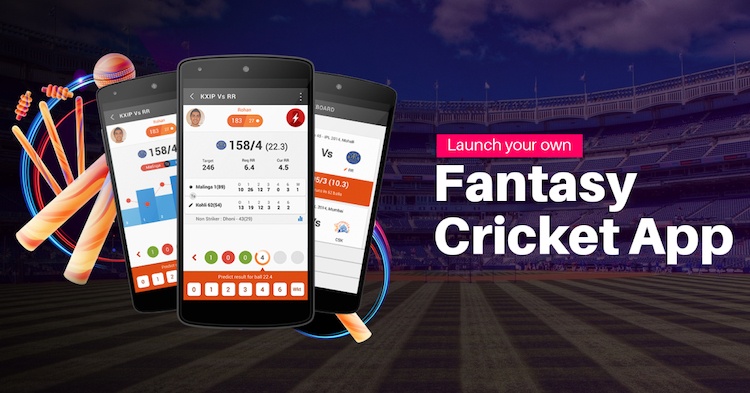
Real-time data synchronization is critical for any fantasy cricket app, enabling users to stay updated with live scores, player statistics, and team performance. This feature enhances user engagement, promotes competitiveness, and ultimately drives retention. Here’s a comprehensive guide on how to implement real-time data synchronization in your fantasy cricket app.
1. Understanding Real-Time Data Synchronization
Importance:
Real-time data synchronization ensures that all users receive updates instantly, reflecting the latest information about matches, scores, and other relevant data.
- User Engagement: Users can make informed decisions quickly, which is crucial during live matches.
- Competitive Edge: Real-time updates foster a competitive environment, allowing users to react and strategize based on live performance.
2. Choosing the Right Technologies
Importance:
Selecting the appropriate technologies will determine the efficiency and scalability of your real-time data synchronization.
- WebSocket Protocol: Utilize WebSockets for real-time communication. This protocol allows for two-way communication between the server and clients, enabling instant data updates without refreshing the app.
- Server-Sent Events (SSE): Consider using SSE for one-way communication from the server to the client. This is suitable for applications where users need to receive updates without sending data back.
3. Data Sources and APIs
Importance:
Reliable data sources and APIs are essential for feeding accurate real-time data into your app.
- Sports Data Providers: Partner with reputable sports data providers like CricAPI, Sportradar, or ESPN to fetch live cricket data, including scores, player stats, and match events.
- Custom APIs: Develop custom APIs to manage and serve real-time data to your app efficiently, ensuring it meets your app’s specific requirements.
4. Database Optimization
Importance:
An optimized database will support real-time data synchronization by enabling quick read and write operations.
- In-Memory Databases: Consider using in-memory databases like Redis or Memcached for caching frequently accessed data, allowing for faster retrieval during live updates.
- Efficient Querying: Optimize database queries to reduce response time and ensure that data retrieval is quick and efficient, especially during peak usage.
5. Data Synchronization Logic
Importance:
Implementing effective data synchronization logic ensures that data is accurately updated across all users.
- Change Data Capture (CDC): Use CDC techniques to track changes in the database and push updates to users in real time.
- Event-Driven Architecture: Implement an event-driven architecture to handle data changes and trigger updates. This approach allows the system to respond dynamically to real-time events.
6. Handling User Connections
Importance:
Managing user connections is essential for ensuring a smooth experience during peak usage.
- Connection Limits: Set limits on the number of simultaneous connections to prevent server overload and ensure stability.
- Heartbeat Mechanism: Implement a heartbeat mechanism to keep track of active connections and close inactive ones, improving resource management.
7. Testing and Quality Assurance
Importance:
Thorough testing ensures that real-time data synchronization works seamlessly across different scenarios.
- Load Testing: Conduct load testing to simulate high user traffic and ensure that the system can handle multiple real-time updates without lag.
- User Acceptance Testing (UAT): Involve real users in testing to gather feedback on the app’s performance and identify any potential issues.
8. User Notifications
Importance:
Notifications keep users informed about important events, enhancing engagement.
- Push Notifications: Implement push notifications to alert users about significant updates, such as match results, player injuries, or changes in league standings.
- In-App Notifications: Provide in-app notifications for real-time updates, allowing users to stay informed while they navigate through the app.
9. Monitoring and Analytics
Importance:
Monitoring the performance of your real-time synchronization features helps identify issues and optimize performance.
- Real-Time Monitoring Tools: Use tools like Prometheus or Grafana to monitor server performance and user activity in real-time, ensuring that the system remains responsive.
- User Analytics: Implement analytics to track user engagement with real-time features, allowing you to make informed decisions about future enhancements.
10. Collaboration with Development Teams
Importance:
Working closely with your development team ensures that the implementation aligns with your overall project goals.
- Agile Development: Use agile methodologies to facilitate collaboration and quick iterations during the development process.
- Regular Updates: Keep all team members informed about progress and challenges, ensuring that everyone is aligned and can contribute effectively.
Conclusion
Implementing real-time data synchronization in your fantasy cricket app is crucial for enhancing user engagement and providing a competitive experience. By choosing the right technologies, optimizing your database, and ensuring effective data synchronization logic, you can create an app that keeps users informed and engaged. Collaborating with a skilled Fantasy Cricket App Development Company and leveraging the expertise of Fantasy Cricket App Developers will ensure that your app stands out in the competitive fantasy sports landscape. With these strategies in place, your custom fantasy sports app development will meet the demands of users seeking real-time, engaging experiences.











